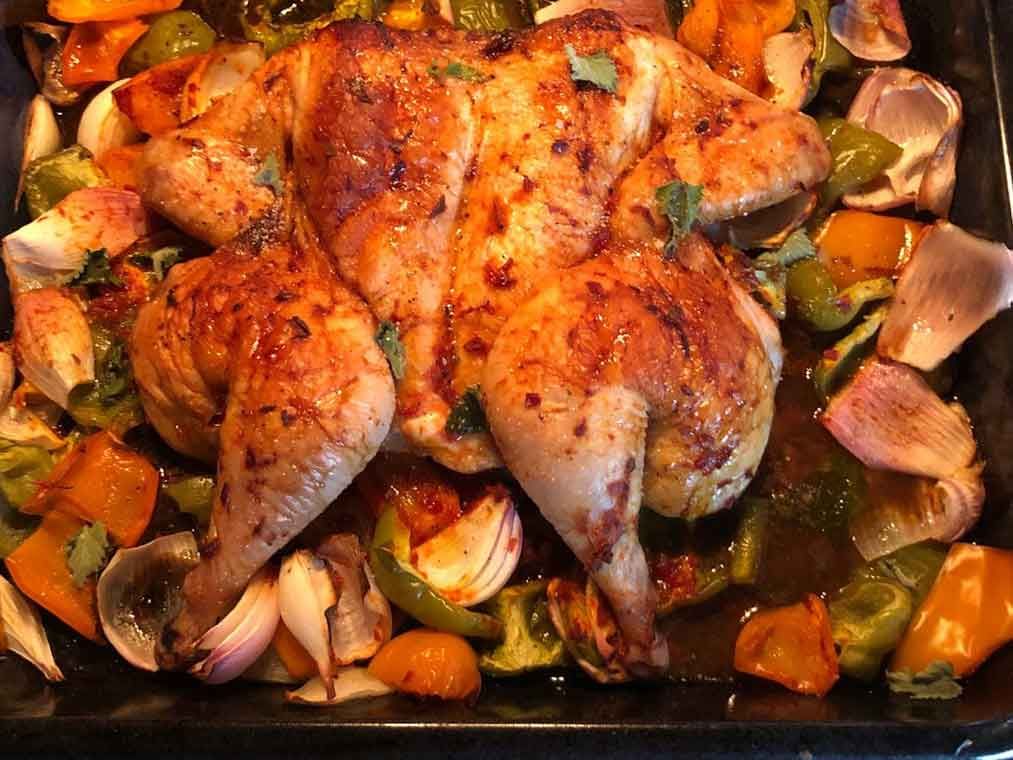The only difference between screwing around and science, is writing it down - Adam Savage
Attempted my first whole chicken.
The recipe was Harissa chicken traybake
And in the spirit of science, I thought I’d take a few notes.

Looks pretty good right?
In my excitement I forgot to add oil, vinegar and salt and pepper. All the seasoning. So when I pulled it out of the oven it already looked a bit dry.
I tested the breast with my thermometer and my suspicions were confirmed.
About 170 degrees. Way too hot.
Kenji Lopez, my new kitchen role model says that at 150 degrees all the water collecting in the meat is forced out. Muscle fibers have become squeezed dry. “Congratulations, your dinner is officially cardboard.”
Otherwise, I think this was a success.
I learnt about organic chickens.. The chicken I bought was labelled ‘organic’ which is a food standard enforced by the US Government (USDA). By law, organic birds must be raised on a 100 % organic diet, must not be caged and must have access to pasture and sunlight. The same can’t be said for other labels like “Cage-Free”, where birds may not have access to sunlight, outdoors or get fed the good stuff.
And about chilling.. After slaughter, most conventional chickens are chilled by submerging them into ice water. It’s cheap, but you pay for it when you get it to the chicken. Water adds to the weight, and most of the water will seep out as it cooks. Since it’s mainly collected on the skin, it won’t be as crispy. Air-chilled & organic is the way to go.